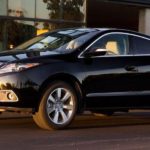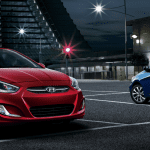Volkswagen, a creator of quirk and variety for over 80 years, has always been a company that has been considered outside of the box when it comes to automotive design. So it’s no wonder such a brand has spawned so many models over the past decades. The sheer variety of makes and models found at Volkswagen dealers should be no surprise to the customer out looking for something a little different. However, sometimes you see a Volkswagen that seems unique even for such a quirky brand.
Beetle Mania
Volkswagen, or VW, is known as the creator of the iconic VW Beetle. An instantly recognizable curvy little car that never fails to stand out in the parking lot or on the road. What many people aren’t aware of is that the original Beetle design was designed by Ferdinand Porsche–the same Porsche who later founded the legendary sports car company that bears his name. Even though the design proved popular after the war, it was passed over by British automakers. But the Beetle finally became available on the US market in 1949, sparking a decades-long love affair with the adorable little bug. This led to the Beetle becoming Volkswagen’s most popular selling car.
But besides the Beetle, the company has a few other cars well known to drivers and enthusiasts, such as the speedy little Jetta, the hatchback Golf, or the icon of the hippie age–the VW Microbus. But never one to be boxed in, VW has been the creator of some pretty unique vehicles over the years. And with drivers as forward-thinking and unique as the company, it’s no wonder Volkswagen enthusiasts have made some pretty unique mods to their own VWs as well, from modifications to the engine to cosmetic alterations that make even the most jaded auto owner do a double-take. And yet no matter the quirky nature of the owner’s creation, no one seems to blink an eye when they realize it’s just another incarnation of the always individual Volkswagen.
A Furry Tribute
In 1997 the popular Hasbro toy Furby became available on toy shelves across the country, much to the delight of children everywhere. The weird little creatures that somewhat resemble the character Gizmo from the 1984 film Gremlins soon became a popular hit. So it’s no surprise that someone out there would relate the cute fuzzy little toy to the stout and curvy VW Beetle. Enter the Furbie–a tribute not only to the Hasbro toy but also playing on the name of perhaps one of the most famous Beetles, Herbie, the little white racing Beetle from Disney’s 1968 film The Love Bug. This creation, dubbed “Furbie,” was conceived in the UK. The owner claims that despite its unique appearance, the car runs and drives just fine. The 1978 manual VW Beetle is covered hood to bumper with faux fur, whiskers, and its own set of ears. It came up for sale as recently as 2020 for a modest $5k.
Call Me Art
It’s a Beetle, no it’s a phone. The Phone Car was the brainchild of Howard Davids, who converted the 1975 VW Beetle into an art car. All in hopes to promote Davids’ phone company in 1983. Well, it worked, making the phone car one of the most recognizable and fantastical cars ever to grace the open road. And one of the best things? According to the art car’s website, it’s drivable and street legal, thanks to its tinted windows and horn that sounds like a ringing phone. The remarkable car has been featured in films, magazines, and books, used in parades throughout the years, much to the delight of anyone who comes across the unique creation.
But David’s phone car wasn’t the first and won’t be the last time someone takes inspiration from the Beetle’s alluring curves. Countless art cars in all shapes and styles have been created over the years for various reasons by artists and business owners alike–some for function, some for expression, and some just because. The cars have been modified to look like tanks, cartoon characters, basketballs, and emblazoned any number of designs used to promote causes and businesses. It seems the VW Beetle is the artist’s and promoter’s go-to vehicle when it comes to wanting to make a statement and catch the public’s attention.
The Harlequin
Not created by enthusiasts but the company itself, the quirky Volkswagen Golf Harlequin is about as zany and eye-catching a car as one can get. You definitely won’t lose it in a parking lot. First created in 1995 as an art car, the Harlequin proved so popular it went into production. A little over 3,000 of the cars were produced in 1996 and made available to the European public, with 264 later being sold in the US market. Each car had assorted colored panels in shades of yellow, green, and blue, reminding one of a mixed-up box of crayons.
The wild color combination went on to inspire countless DIY jobs from car owners over the years. While a new version of the VW Polo modeled after the original color scheme of the 1996 design was created in limited numbers in 2021 for the Dutch market, it is not slated for general release to the public…yet. With the demand for the multicolored car high, who knows the fate of the colorful car?
The Rabbit Run
Keeping with VW’s boxy design with plenty of sharp curves, you can tell a VW Rabbit a mile away. With its wide hood and sloped hatchback, it’s become a favorite for drivers that want something a little quirky but also reliable. Many drivers even seek out older models that often come in hues like dreamy teal or vibrant green, using them as daily rides. But there is one breed that the public might have forgotten about, the Rabbit pickup truck. The Rabbit truck had the cab of the car blended with a pickup truck bed, creating a unique but practical vehicle that was reminiscent of the Chevy El Camino or Ford Ranchero.
VW first began production in 1979, building off the idea of the original VW Rabbit hatchback in order to gain a place in the rapidly expanding truck market. Unfortunately, production on the truck was halted only a few years after it began due to poor sales. But the good news? Despite its small production numbers, Rabbit pickup trucks resell for a fairly low price, making it easy for drivers to acquire and modify the vehicles, adding more flair or greater engine power.
In the Eye of the Beholder
As with anything that marches (drives) to the beat of its own drum, Volkswagen will always attract those drivers and buyers looking for that unconventional, standout vehicle unlike anything else on the market. Whether it be in the curves of the frame or the wide palette of color choices available through the new Spektrum program that gives buyers over 40 custom color choices on certain models, people young and old seem to be inspired by the carmaker in a way other companies just can’t manage. Perhaps it’s their hip advertising campaigns that caught people’s attention from the very beginning, or the standout bold lines and angles that every model seems to possess. But for collectors, drivers, and enthusiasts, the why doesn’t seem important because it should be obvious. The brand, no matter the model, is cheerful and fun and inspires folks to make it their own and be more of themselves, embracing their differences and showing them off in a bold, vibrant way so that one can’t help but smile when they see a Volkswagen pass by.




